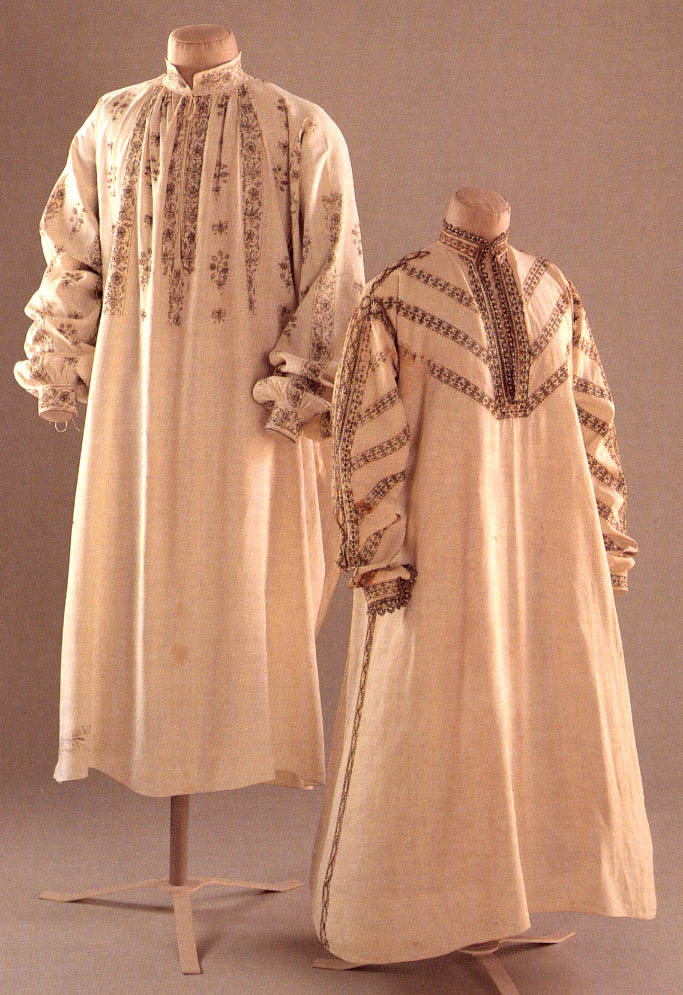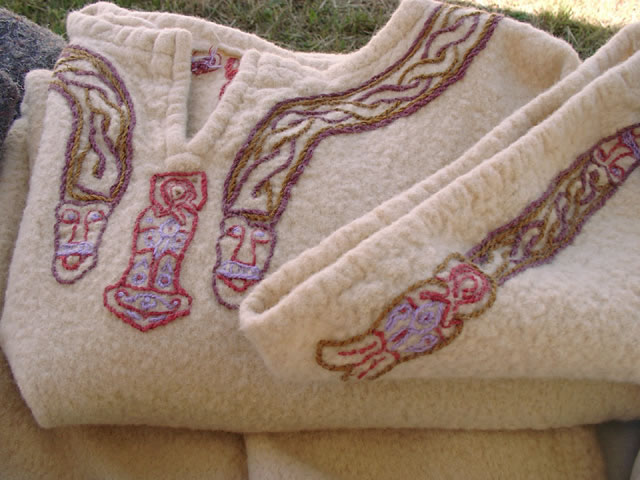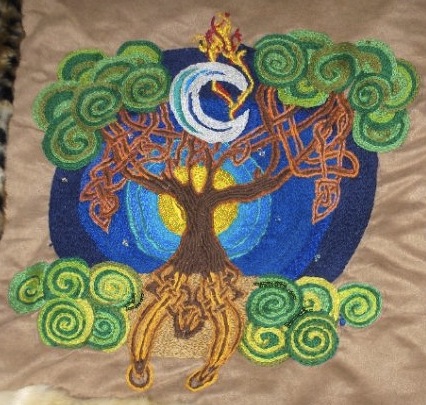Difference between revisions of "Embroidery"
| Line 18: | Line 18: | ||
*Scarletwork is like blackwork, except it is sewn with red thread. | *Scarletwork is like blackwork, except it is sewn with red thread. | ||
*[[Polychrome]] is embroidery of any color except black, made in the same tight often geometric style, and often only including one color. | *[[Polychrome]] is embroidery of any color except black, made in the same tight often geometric style, and often only including one color. | ||
| − | + | [[File:Embroidery by DierdreDS.jpg|thumb|left]] | |
===Stiches=== | ===Stiches=== | ||
*Running stich, or holbein [http://www.prettyimpressivestuff.com/stitches/holbein_files/holbein_frames.htm how to] | *Running stich, or holbein [http://www.prettyimpressivestuff.com/stitches/holbein_files/holbein_frames.htm how to] | ||
Revision as of 23:36, 15 December 2009
Embroidery is the art or handicraft of decorating fabric or other materials with designs stitched in strands of thread or yarn using a needle. Embroidery may also use other materials such as metal strips, pearls, beads, quills, and sequins. Sewing machines can be used to create machine embroidery.

The origins of embroidery are lost in time, but examples survive from ancient Egypt, Iron Age Northern Europe and Zhou Dynasty China. It has many roots all around the world and is being done in many different ways because of their cultures. Elaborately embroidered clothing, religious objects, and household items have been a mark of wealth and status in many cultures including ancient Persia, India, Byzantium, medieval England (Opus Anglicanum or "English work"), and Baroque Europe. Hand embroidery is a traditional art form passed from generation to generation in many cultures, including northern Vietnam, Mexico, and eastern Europe.
The Bayeux Tapestry is not a true tapestry; it is an elaborately embroidered wall hanging originally displayed at the Bayeux Cathedral, and now housed at a special museum in Bayeux, Normandy.
Types
- Free - In free embroidery, designs are applied without regard to the weave of the underlying fabric. Examples include crewel and traditional Chinese embroidery.
- Counted-thread embroidery patterns are created by making stitches over a pre-determined number of threads in the foundation fabric. Counted-thread embroidery is more easily worked on an even-weave foundation fabric such as embroidery canvas, aida cloth, or specially woven cotton and linen fabrics although non-evenweave linen is used as well. Examples include needlepoint and cross-stitch.
- In Surface embroidery, patterns are worked on top of the foundation fabric using decorative stitches and laid threads. Surface embroidery encompasses most free embroidery as well as some forms of counted-thread embroidery (such as cross-stitch).
- Canvas work threads are stitched through a fabric mesh to create a dense pattern that completely covers the foundation fabric. Not all canvas work is counted-thread embroidery. There are printed and hand painted canvases where the painted or printed image is meant to serve as a color guide. Stitches are sometimes of the stitcher's choosing.
- Ribbon embroidery is embroidery performed with ribbon rather than standard six-thread string. Silk ribbon or a silk/organza blend ribbon are commonly used for this type of embroidery. There are many different styles of ribbon embroidery, such as woven rose, French knot, feather stitch, fly stitch, fly stitch fern, couching stitch, lazy daisy, looped petal flower, Japanese ribbon stitch, stem stitch rose, split stitch, and straight stitch. Those are usually taught to beginners who are just learning silk ribbon embroidery. Ribbon embroidery is most commonly used to create floral motifs.
- In Machine embroidery, Embroidery designs are stitched with an automated embroidery machine. These designs are "digitized" with embroidery software. They can have different types of "fills" which add texture and design to the embroidery. Almost all basic types of embroidery can be created with machine embroidery. These include: applique, free-standing lace, cutwork, cross-stitch, photo stitch, and basic embroidery.
- Couching-
Elizabethan Embroidery
- Blackwork Embroidery is a form of counted-thread embroidery that is usually stitched on even-weave fabric. Any black thread can be used, but firmly twisted threads give a better look than embroidery floss. Traditionally blackwork is stitched in silk thread on white or off-white linen or cotton fabric. Sometimes metallic threads or coloured threads are used for accents.
- Scarletwork is like blackwork, except it is sewn with red thread.
- Polychrome is embroidery of any color except black, made in the same tight often geometric style, and often only including one color.
Stiches
Links
- Saxon Embroidery
- Viking Embroidery
- Needlecrafters
- Directory of stitches
- http://russianembroidery.com/fr_abtrpefr.htm Russian Punch embroidery]
- Ribbon Embroidery
- Ribbon embroidery enthusiasts
- Armenian Embroidery (Music =[ )
- Embroidery Articles for may different types
- Yahoogroup for Brazilian Embroidery
- List of stitches with how tos
- Blackwork Embroidery primer
- Black work for costume
- Blackwork Gallery
- Elizabethan Bed Hanging - Petite Point Applique

